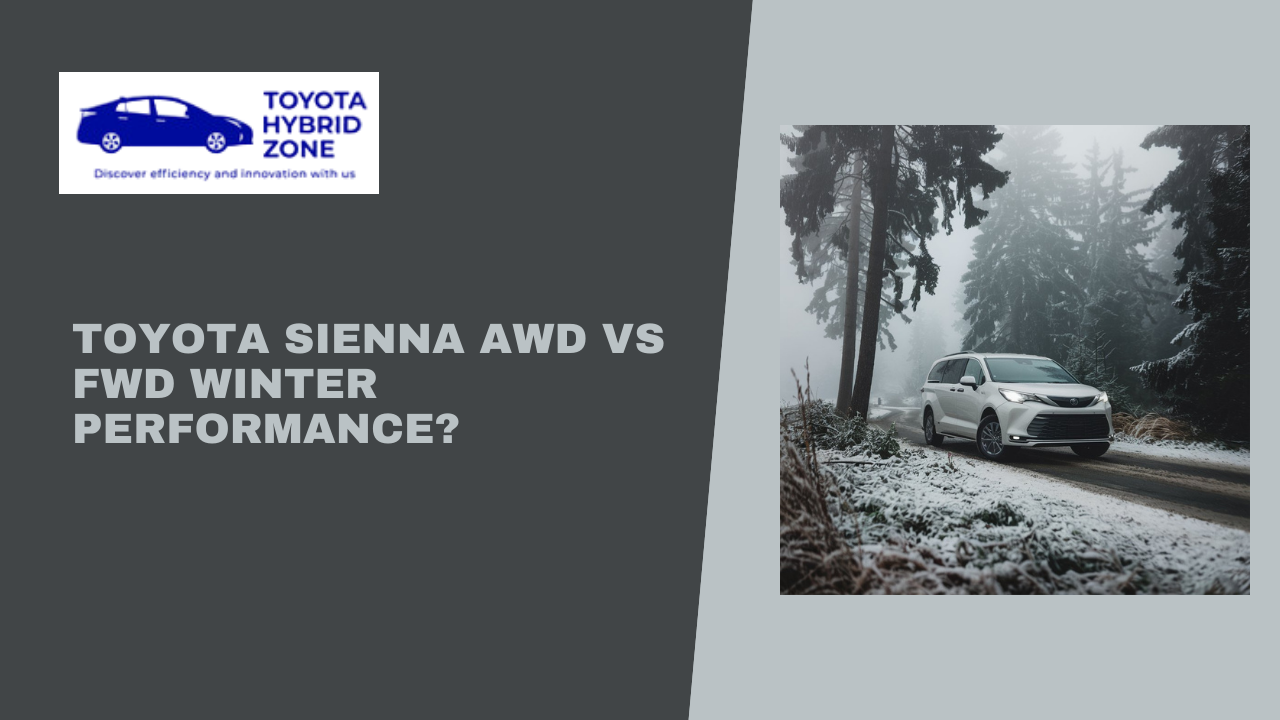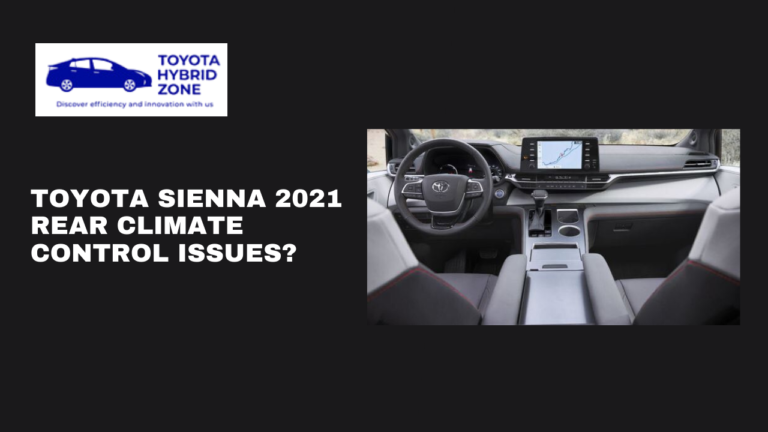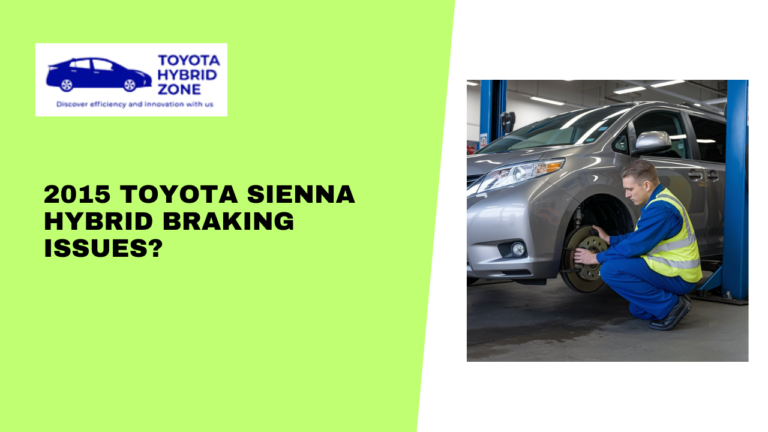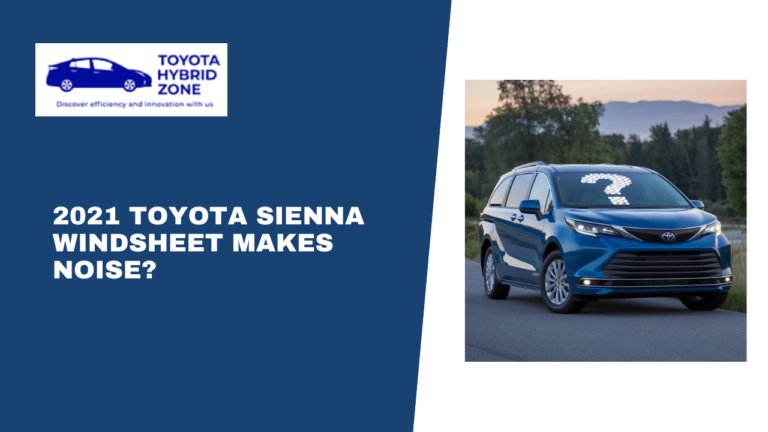Toyota Sienna AWD Vs FWD Winter Performance? The Ultimate Winter Driving Guide (AWD vs. FWD)
Is a Toyota Sienna with AWD considerably better than one with FWD in winter performance? Winter driving is quite challenging, especially in areas where it snows heavily and the roads are icy. Knowing how well your car can perform in various conditions is essential to traveling safely and efficiently. In this blog post, we’ll explore the nitty-gritty of the Toyota Sienna’s AWD and FWD systems, looking at how each performs in winter conditions.
We will base our analysis on personal experiences, expert opinions, and reliable sources, including owner’s manuals, automotive reviews, and technical specifications. By the end of this post, you will know which Sienna model best suits your needs for driving through the winter.
Short Answer:
The decision between AWD and FWD greatly impacts performance and safety in the Toyota Sienna, especially when considering winter driving. Here are the major differences:
Traction And Stability
- AWD: The power of AWD systems is dispersed to all four wheels, thus offering greater traction and stability on slippery surfaces. It’s useful when driving on snow-covered roads, icy patches, or sudden acceleration or braking.
- FWD: FWD systems only send power to the front wheels. This is enough for most driving conditions, but it will have trouble in extreme winter weather, especially uphill or in sharp turns.
Fuel Economy
- AWD: AWD systems are generally less fuel-efficient than their FWD counterparts because of the increased mechanical complexity and power delivery. Nevertheless, the difference in fuel economy between the AWD and FWD Sienna models is not so dramatic.
- FWD: FWD systems typically tend to provide better fuel efficiency because they have fewer moving parts and lower mechanical losses.
Cost
- AWD: The AWD models are also more expensive than the FWD models, considering the added components and engineering.
- FWD: The FWD models are somewhat cheaper and more affordable, hence preferred by budget-driven buyers.
Real-World Performance
- AWD: Owners of AWD Sienna models often report better handling and control in winter conditions, especially on snowy or icy roads. The AWD system helps maintain traction and prevents wheel slip, making it easier to navigate challenging road surfaces.
- FWD: FWD Sienna models can still do perfectly well in mild winter weather conditions, especially with good quality winter tires, but would struggle in severe conditions or up steep hills.
“To estimate your potential fuel savings, use our Fuel Savings Calculator . Simply input your current fuel consumption and desired improvement to see the estimated savings.”
What Is The Fundamental Difference Between AWD And FWD Systems?

The fundamental difference between AWD and FWD systems is how they distribute power to the wheels:
- FWD (Front-Wheel Drive): In FWD systems, power from the engine is transferred entirely to the front wheels. It’s a relatively simple configuration that’s often more fuel-efficient but not as great in slippery conditions, particularly uphill or on sudden turns.
- AWD (All-Wheel Drive): AWD systems deliver power to all four wheels, thus giving a better grip and stability in snow, ice, or wet surfaces. The reason behind this is a sophisticated system of differentials and electronic controls that monitor and adjust the power distribution constantly.
Here’s A Table Summarizing The Key Differences:
| Feature | FWD | AWD |
| Power Distribution | Front wheels only | All four wheels |
| Traction and Stability | Less in slippery conditions | Superior in slippery conditions |
| Fuel Efficiency | Generally better | Generally worse |
| Cost | Less expensive | More expensive |
| Maintenance | Simpler | More complex |
How Does Each System Handle Power Distribution?
Power Distribution In AWD And FWD Systems
Let’s see how each system, AWD and FWD, distributes power to the wheels:
Front-wheel drive (FWD)
- Power Path: In FWD systems, the engine’s power is transmitted directly to the front wheels through a simple drivetrain.
- Power Distribution: 100% of the engine’s power is sent to the front wheels.
All-wheel drive (AWD)
- Power Path: AWD systems employ a more complex drivetrain, usually involving a transfer case and additional differentials. This will allow power to be distributed to all four wheels.
- Power Distribution: The distribution of power to the wheels depends on the specific AWD system and driving conditions.
Common AWD Systems Include:
Part-Time AWD:
- In normal driving conditions, power is only sent to the front wheels.
- This type of power distribution occurs whenever the driver uses the AWD mode, typically through a manual lever or electronic control, and typically in a 50/50 split across all four wheels.
Full-Time AWD
- All four wheels are driven full-time; that is, under all circumstances.
- The distribution of power between the front and rear axles can be variable, and it is typically biased to the front wheels in normal driving conditions. For instance, a common split could be 60% to the front and 40% to the rear.
- The system automatically adjusts power delivery in slippery conditions to achieve better traction. It can deliver 80% of the power, for example, to the back wheels when needed.
Electronic AWD:
- In an electronic all-wheel drive, electronic controls dynamically control power distribution to the front and rear axles. It monitors many conditions such as wheel speed, steering angle, and throttle position to find the ideal balance in terms of power distribution.
- This ensures the vehicle has good control and enhanced grip in any variety of driving environments.
“If you’re experiencing wind noise issues with your Sienna, check out our article on troubleshooting common wind noise problems: [Toyota Sienna Windsheet Makes Noise?]”
Which System, AWD Or FWD, Offers Better Traction In Snowy Conditions?
Traction on snow is a bit easier to come by in AWDs as opposed to FWDs.
The reason Is That:
- A. AWD systems: The power generated from the engine is transferred to all four wheels. This means that if the front two lose their grip on slippery surfaces, the rear two can continue gripping the road.
- Traction Control: Advanced traction control systems are offered by many AWD systems to further enhance the ability to get traction, which works by electronically controlling the amount of power delivered to each wheel.
- Hill Climbing: AWD is especially useful for climbing steep snowy hills because the rear wheels can offer extra traction to prevent wheel slip and facilitate a smooth climb.
FWD Systems
- Power Distribution: FWD systems distribute power only to the front wheels. Although this is sufficient for mild winter conditions, it may not be enough for heavy snow or icy roads, especially during acceleration and hill climbing.
- Weight Transfer: FWD vehicles can take advantage of weight transfer to the front wheels during acceleration, which can improve traction. However, this advantage may be limited in severe winter conditions.
Ensure peak performance of your Sienna’s hybrid system. Use our Hybrid Battery Health Checker Tool to assess your battery’s health and take necessary actions.
My Personal Experience:
I have had the opportunity to drive both AWD and FWD Toyota Sienna models during different winter conditions. While both options deliver reliable performance, in my experience, AWD models hold a considerable advantage, especially with heavy snowfall and on icy roads. The added traction and stability of AWD have proven invaluable when navigating challenging winter roads. Regardless, it’s worth noting that even the latest AWD can’t perform miracles for low-quality tires. So, investing in a decent set of winter tires will be necessary for best performance and safety, AWD or not.
The FWD Sienna can be problematic when experiencing more severe winter conditions, even if you live in a region where the winters are milder. The weight of the car helps with traction, but it still slides on ice and loses control on such slippery roads. If you live in areas with a lot of snow or frequently encounter icy roads, it is better to opt for the AWD Sienna.
“While the Sienna Hybrid is known for its fuel efficiency and smooth performance, some owners may experience occasional acceleration lag. For more information on troubleshooting this issue, refer to our dedicated article: [Toyota Sienna Hybrid Acceleration Lag?]”
Does AWD Or FWD Provide Better Stability On Slippery Surfaces?
AWD Delivers Better Stability On Slippery Surfaces Compared To FWD.
Here’s Why:
- Power Distribution: An AWD system distributes power to all four wheels. Therefore, in the event that one or two lose traction on a slippery surface, the other two will still manage to find traction. Such translates into increased stability and control.
- Traction Control: Advanced traction control systems are part of many AWDs, which can further improve traction by electronically regulating the flow of power to each wheel.
Which System Is More Fuel-Efficient In Winter Conditions?
Generally, FWD Cars Tend To Be More Fuel-Friendly Than AWD Vehicles Even In Winter.
Here Is Why:
- Mechanical Complexity: AWD has a large number of mechanical parts that make up the system such as extra differentials and driveshafts. This creates more energy consumption to run the system, thus more fuel gets consumed.
- Weight: AWD systems weigh heavier. Heavier vehicles tend to be more fuel-intensive.
- However, one should consider that the fuel economy difference between AWD and FWD varies, as it depends on considerations like:
- Vehicle Model and Engine: The influence of a particular model will be different and have different effects on fuel efficiency.
- Driving Habits and Conditions: Aggressive driving styles and frequent use of AWD in non-demanding conditions have significantly reduced fuel efficiency.
- Tire Choice. Winter tires of high quality give better grip and fueling efficiency in AWD and FWD conditions.
Which System Is Better For Deep Snow?
AWD Systems Outperform FWD Systems By Several Factors On Uphill Climbs In Snow Conditions.
Here’s how:
AWD Systems:
- Power Delivery: AWD systems send power to all four wheels. This offers better grip than FWD systems, which is essential when driving uphill on a snowy or icy road.
- Traction Control: Many AWD systems are equipped with advanced traction control systems that can further enhance traction by regulating power delivery to each wheel. This prevents wheel spin and maintains momentum on steep inclines.
FWD Systems:
- Power Distribution: FWD systems send power only to the front wheels. Although this may provide enough traction in relatively mild winter conditions, it has difficulty with steep, snowy hills when starting from a stop or accelerating.
- Weight Transfer: Weight transfer to the front wheels during acceleration can be beneficial in terms of improved traction, but this is limited on slippery surfaces.
How Do Both Systems Handle Braking On Icy Roads?
Both AWD And FWD Systems Have Problems Braking On Icy Roads.
While AWD tends to provide better traction and stability, the system does not improve braking on ice. The quality of tires is the main factor affecting braking on roads covered with ice.
What Are The Pros And Cons Of Each System?
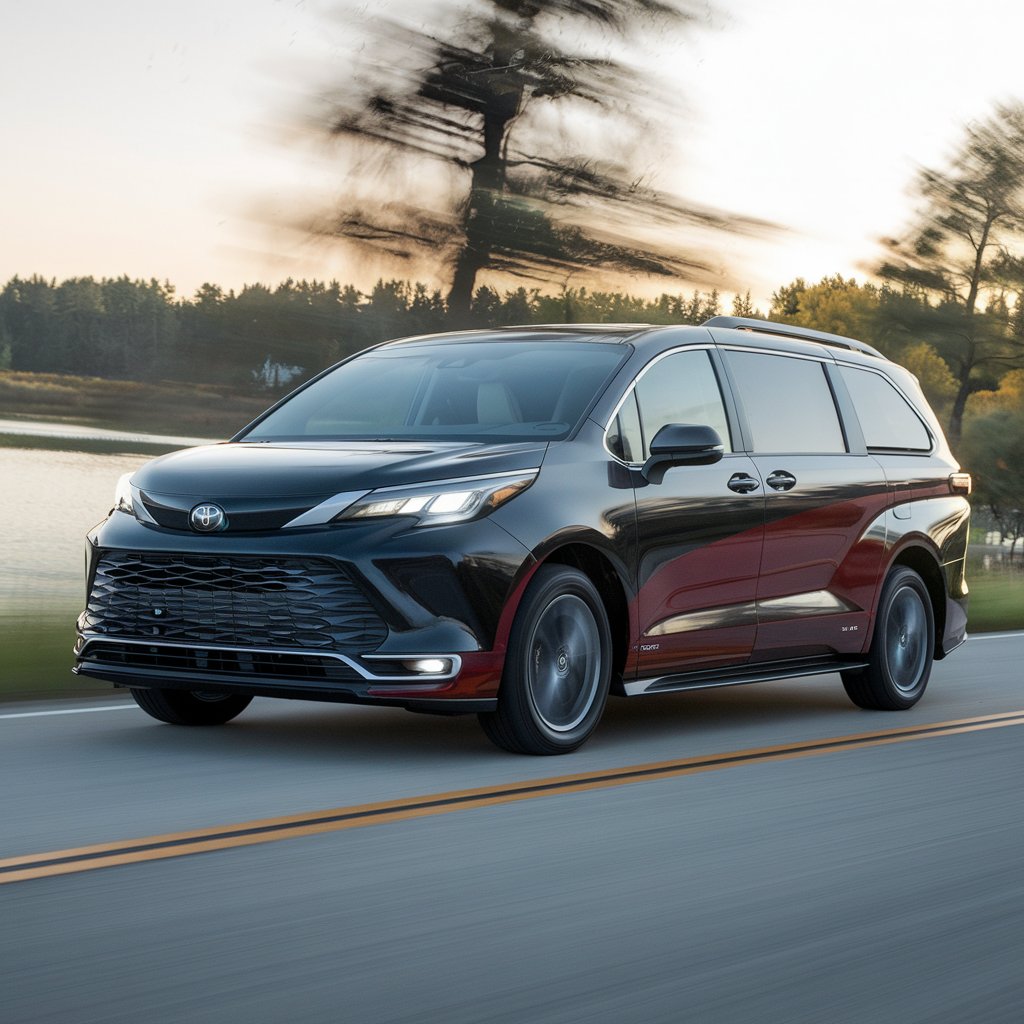
AWD (All-Wheel Drive)
Advantages:
- Better grip and control: Especially in poor weather like snow, ice, and rain.
- Better control with handling: It has more griping and stability on the road and in other conditions.
- Better on slope climbs and off-road travels: More traction and distributing power.
Disadvantage:
- Fuel efficiency is compromised because there would be added mechanical complexity coupled with power distribution.
- Extra cost: AWD types are usually costlier than FWD types.
- Higher maintenance costs: Complicated drivetrain components have more chances of requiring frequent services.
FWD (Front-Wheel Drive)
Advantages:
Better fuel economy: Cleaner drivetrain and lesser weight.
Lower cost to get started: FWD systems are generally less costly as compared to AWD systems.
Easier maintenance: Simpler drivetrain with fewer components.
Disadvantages
Less traction and stability: Primarily under wet, snow, or slippery roads
Not easy to maneuver rugged roads: Uphill grades and off-road driving
Greater chances of wheel spin: When acceleration takes place on slippery roads.
The Sienna offers spacious seating, advanced technology, and impressive fuel efficiency. To explore other Toyota Hybrid options and compare them side-by-side, check out our Toyota Hybrid Model Comparison Tool.
Are There Any Specific Winter Driving Tips For Sienna Owners?
Some winter driving tips for Sienna owners are given as follows:
Tire-related things:
- Winter Tires: Buy a good quality winter tire. Winter tires offer the maximum grip on snow and ice.
- Tire Pressure: Keep checking and adjusting your tire pressure according to the pressure indicated by the manufacturer of the vehicle. Properly inflated tires can boost the handling and also help in saving fuel.
Driving Techniques:
- Gentle Acceleration and Braking: Accelerate and brake slowly and smoothly to prevent wheel spin and loss of control.
- Keep a Safe Distance: Increase your following distance to allow for more stopping time on slippery roads.
- Avoid Sudden Maneuvers: Sudden turns or lane changes can easily lead to skidding, especially on icy roads.
- Use Low Gear when starting on a hill; this will help maintain the grip and prevent slipping of the wheels.
- Drive slow on bridges and overpasses because these areas freeze first, hence reduce speed and be very cautious.
Vehicle Preparations:
- Test the battery; it must be in good condition to withstand the cold.
- Fluid Check: Check and top off fluids such as engine oil, coolant, and windshield washer fluid.
- Wiper Blades: Replace worn wiper blades with winter-rated blades for effective clearing of ice and snow.
- Emergency Kit: Always maintain an emergency kit in your vehicle. This should include blankets, water, snacks, flashlight, jumper cables, and a first-aid kit.
Conclusion:
While both AWD and FWD Toyota Siennas offer reliable transportation, the choice between the two depends on individual needs and local weather. AWD systems are significantly better in severe winter climates because they offer better grip and stability on snowy surfaces and ice. However, FWD has better fuel economy and lower maintenance costs, which make them suitable for milder climatic conditions. Regardless of the drivetrain in use, having solid winter tires and being careful to drive safely is key to getting the best performance and safety under winter conditions.
Is AWD or FWD better for fuel economy?
Generally, FWD vehicles are more fuel-efficient than AWD vehicles due to their simpler drivetrain and lower weight. However, the difference in fuel economy can vary depending on factors such as driving habits, tire choice, and specific vehicle configurations.
Can I install winter tires on my FWD Sienna to improve winter performance?
Yes, installing high-quality winter tires on your FWD Sienna can significantly improve its performance in winter conditions. Winter tires have specialized tread patterns and rubber compounds that provide better traction on snow and ice.
Is it necessary to use snow chains with an AWD Sienna?
While snow chains can provide additional traction in extremely deep snow, they are generally not necessary for most winter driving conditions. However, it’s always a good idea to check local regulations and road conditions to determine if snow chains are required.
How often should I rotate my tires?
It’s recommended to rotate your tires every 5,000 to 7,500 miles to ensure even wear and optimal performance. This is especially important for vehicles with different drivetrain configurations, as uneven tire wear can affect handling and fuel efficiency.
Can I use all-season tires in winter conditions?
All-season tires can provide adequate traction in mild winter conditions. However, if you frequently encounter heavy snow or ice, it’s recommended to invest in a set of winter tires for optimal performance and safety.

